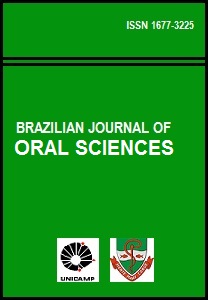Abstract
Aim: To demonstrate the magnitude and direction of skeletal changes in the maxilla and mandible during and after the use of bionator, as well as their rotations. Methods: Partial superimposition on the maxilla and mandible on the metallic implants and total superimposition on the cranial base were performed at three periods, T1 before bionator therapy, T2 after bionator therapy, and T3 5.68 years after T2. Results: There was total clockwise maxillary rotation and counterclockwise mandibular rotation, in the North American technique, throughout the study period, as well as extensive remodeling on the condylar region, especially in vertical direction and on the gonial region in horizontal direction. Conclusions: The total maxillary rotation seemed to be significantly affected by therapy than the mandible. There was a clear change in the direction of condylar remodeling compared to the period of bionator therapy and posterior bionator therapy. Considering the entire study period, it was observed that intra-matrix rotation of the maxilla and mandible masked their total rotation, causing minimum changes in the matrix rotation.The Brazilian Journal of Oral Sciences uses the Creative Commons license (CC), thus preserving the integrity of the articles in an open access environment.
Downloads
Download data is not yet available.

